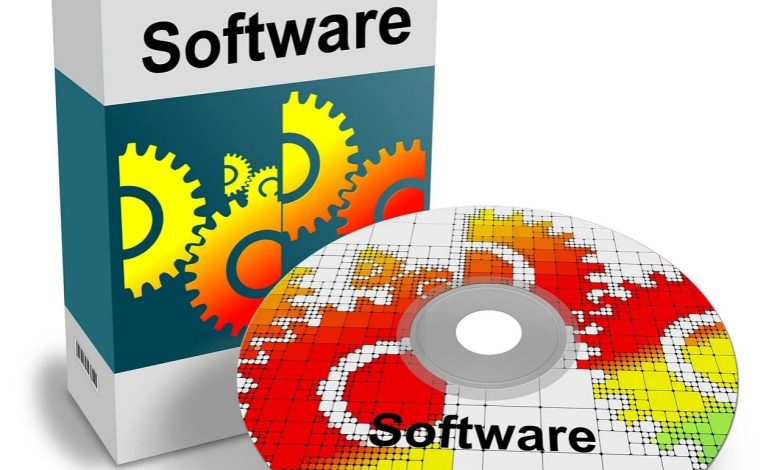Unlocking the Power of Software Center: Step-by-Step Access Tutorial 2024

Are you ready to unlock the full potential of Software Center? Look no further! In this step-by-step access tutorial, we will guide you through every nook and cranny of this powerful software, unveiling its hidden features and empowering you with all the knowledge needed to navigate it like a pro.
Whether you’re a tech-savvy guru or just dipping your toes into the world of software management, get ready to take control with our comprehensive guide. So grab your metaphorical keys, because we’re about to unlock the power of Software Center together!
Introduction to Software Center
Software Center is a centralized location where users can access and manage software applications on their computer. It is a feature that comes pre-installed on Windows operating systems, starting from Windows 7. This powerful tool allows users to easily install, update, and remove software applications without having to search for them online or go through complicated installation processes.
In this section, we will provide an in-depth introduction to Software Center and explain its various features and functionalities.
- Accessing Software Center:
To access the Software Center, simply click on the Start menu and type “Software Center” in the search bar. Alternatively, you can also find it by navigating to Control Panel > System and Security > System > Advanced system settings > Software tab. - User Interface:
The user interface of Software Center is simple and user-friendly. The main window is divided into three sections – Applications, Updates, and Installation Status. The Applications tab displays all the available software applications that can be installed from the center. The Updates tab shows any pending updates for installed applications while the Installation Status tab displays all the ongoing or completed installations. - Installing Applications:
Installing new applications from Software Center is extremely easy. Simply select the application you want to install from the list under the Applications tab and click on Install at the bottom right corner of the window. You may also have options to customize certain installation settings such as language or location before proceeding with the installation process. - Updating Applications:
One of the most useful features of Software Center is its ability to automatically check for updates and install them. The Updates tab displays all the available updates for your installed applications. You can either choose to update individual applications or select all and click on Install All Updates. - Uninstalling Applications:
To uninstall an application, go to the Applications tab, select the application you want to remove, and click on Uninstall at the bottom right corner of the window. This will open the uninstall wizard for that particular application, which you can follow to complete the removal process. - Customizing Settings:
Software Center allows users to customize certain settings according to their preferences. To access these settings, click on the gear icon at the top right corner of the window. From here, you can change options such as how often Software Center checks for updates, whether or not it should show notifications, and more. - Troubleshooting and Support:
If you encounter any issues while using Software Center or have any questions about its features, you can access troubleshooting and support resources by clicking on Help at the top right corner of the window.
In conclusion, Software Center is a convenient tool that makes managing software applications on your computer a breeze. Its user-friendly interface and various features make it a valuable.
What is Software Center?
Software Center is a powerful tool that allows users to manage and install software applications on their Windows computer. It is a built-in feature of the Microsoft System Center Configuration Manager (SCCM) and can be accessed through the Control Panel or by searching for “Software Center” in the Start menu.
One of the main advantages of using Software Center is its user-friendly interface, which makes it easy for even non-technical users to navigate and install applications. It also provides a centralized location for managing all software installations, updates, and configurations, making it convenient for IT administrators to ensure that all computers are up-to-date with necessary software.
Once you open Software Center, you will see several tabs at the top: Applications, Updates, Operating Systems, Device compliance, and Options. Each tab serves a specific purpose and can help you manage different aspects of your software.
The Applications tab is where you can view all available applications that have been made available by your organization’s IT department. These could include productivity tools like Microsoft Office or Adobe Acrobat Reader, as well as specialized software used within your organization.
If you need to install an application from this list, simply click on it and then click on “Install.” You may also see additional options such as “Required Installation” or “Available Installation,” depending on how your organization has configured application deployments through Software Center.
The Updates tab displays any pending updates that need to be installed on your computer. This includes Windows updates as well as updates for any installed applications. You can choose to install updates immediately or schedule them for a later time.
The Operating Systems tab allows you to upgrade your operating system to a newer version if it has been made available by your organization. This is useful for large-scale upgrades, as it allows IT administrators to centrally manage the process and ensure that all computers are updated in a timely and consistent manner.
The Device compliance tab shows if your computer is in compliance with the security policies set by your organization. If there are any issues, such as missing antivirus software or outdated operating system versions, you will be notified here so you can take appropriate action.
Lastly, the Options tab allows you to customize various settings within Software Center, such as notifications or how installations are handled when your computer is in use.
Overall, Software Center is an essential tool for managing software on Windows computers within an organization. Its user-friendly interface and centralized management capabilities make it a valuable resource for both users and IT administrators.
Benefits of using Software Center
Software Center is a powerful tool that comes built-in with most Windows operating systems. It serves as a centralized hub for managing and installing software applications on your device. While it may seem like just another feature, there are several benefits to using Software Center that make it an essential tool for any computer user.
- Easy Access to Software Catalogue:
One of the main advantages of using Software Center is its comprehensive software catalogue. Instead of individually searching and downloading programs from the internet, you can find all the necessary applications in one place. This not only saves time but also ensures that you are downloading safe and approved software for your system.
- User-Friendly Interface:
Software Center has a simple and intuitive interface, making it easy for even non-technical users to navigate and use effectively. All the available software is neatly categorized into different categories, such as Productivity, Utilities, Security, etc., making it quick and effortless to find what you need.
- Automatic Updates:
With Software Center, you no longer have to worry about manually updating each installed application on your device regularly. It automatically checks for updates and installs them in the background without interrupting your work. This not only saves time but also ensures that your system is always up-to-date with the latest versions of all the essential programs.
- Centralized Management:
For organizations or businesses with multiple devices running on a network, Software Center offers a centralized management solution. System administrators can remotely manage and distribute software applications across all connected devices through Software Center, making it easier to maintain consistency and control over the software installed on each device.
- Customization Options:
Software Center also allows users to customize their experience by selecting which applications they want to see in the catalogue or creating their own categories. This feature is especially useful for organizations that want to limit the software options available to their employees or customize the interface according to their needs.
- Secure Installations:
When downloading software from external sources, there is always a risk of accidentally installing malicious programs. However, with Software Center, all the available applications are thoroughly tested and approved by your system administrator, ensuring secure installations.
In conclusion, Software Center offers many benefits such as easy access to a comprehensive software catalogue, automatic updates, centralized management, customization options, and secure installations. It is a valuable tool for both individual users and organizations looking for a convenient and efficient way to manage their software applications on Windows devices.
You May Also Like: How Sheppard Software Revolutionized Online Learning and Gaming In 2023
Step-by-step guide on accessing Software Center
Software Center is a powerful tool that allows users to manage and install software applications on their computer. It provides a centralized location for accessing and managing all the applications available in your organization’s network. In this step-by-step guide, we will walk you through the process of accessing Software Center on your Windows computer.
Step 1: Open the Start Menu
To access Software Center, first, click on the Start menu located at the bottom left corner of your screen. Alternatively, you can press the Windows key on your keyboard to open the Start menu.
Step 2: Search for “Software Center”
In the search bar of the Start menu, type in “Software Center” and hit enter. This will bring up a list of results related to Software Center.
Step 3: Click on “Software Center” Result
From the list of results, click on the option that says “Software Center.” This will open up Software Center application.
Step 4: Enter User Credentials
Once Software Center is opened, you will be prompted to enter your user credentials (username and password). Make sure to enter your correct login information as provided by your organization’s IT department.
Step 5: Explore Available Applications
After successfully logging in, you will be directed to the main page of Software Center which displays all available software applications for installation. You can browse through various categories or use the search bar at the top right corner to find specific applications.
Note: The applications available on Software Center may vary depending on your organization’s policies and permissions.
Step 6: Select an Application
To install an application, simply click on its name to open up the application details page. Here, you will find information about the application such as its publisher, version, and installation status.
Step 7: Click “Install” Button
If the application is not already installed, you will see a button that says “Install.” Click on it to initiate the installation process.
Step 8: Monitor Installation Progress
Once you have clicked on the “Install” button, a progress bar will appear indicating the installation process. You can monitor the progress until it is completed.
Step 9: Complete Installation and Close Software Center
After the installation is completed, you will see a message confirming the successful installation. You can then close Software Center by clicking on the “X” button at the top right corner of the window.
Congratulations! You have successfully accessed Software Center and installed an application. You can now access your newly installed application from your Start menu or desktop as usual.
How do I download apps from Software Center?
Downloading apps from Software Center is a simple and efficient way to access and install software on your computer. Whether you are looking for productivity tools, games, or other useful applications, Software Center has got you covered. In this section, we will guide you through the step-by-step process of downloading apps from Software Center.
Step 1: Open Software Center
The first step in downloading apps from Software Center is to open the application itself. You can do this by clicking on the “Start” menu and typing “Software Center” in the search bar. Once the application appears in the results, click on it to open it.
Step 2: Browse Available Apps
After opening Software Center, you will be greeted with a list of available apps categorized into different sections such as Featured, Productivity, Utilities, etc. You can browse through these categories to find the app that best suits your needs.
You can also use the search bar at the top of the window to directly search for a specific app if you know its name.
Step 3: Select an App
Once you have found an app that interests you, click on its icon or name to view more information about it. Here, you will see a brief description of the app along with its size and rating.
If you are satisfied with the information provided and want to download the app, click on the “Install” button located next to its name.
Step 4: Installation Process
After clicking on “Install,” a progress bar will appear, indicating the download and installation process. The time it takes to complete this process will depend on the size of the app and your internet speed.
During the installation process, you can continue using your computer without any interruption. You will receive a notification once the app has been successfully installed.
Step 5: Launch App
Once the app is installed, you can either click on “Launch” from the Software Center window or find the app in your Start menu to open it and start using it.
Congratulations, you have successfully downloaded an app from Software Center! You can follow these steps to download as many apps as you want from Software Center and enjoy their features on your computer.
Troubleshooting common issues with Software Center
Software Center is a powerful tool for managing and installing software on your computer. However, like any technology, it can sometimes experience issues that may prevent you from fully utilizing its capabilities. In this section, we will discuss some common problems that users may encounter with Software Center and provide troubleshooting steps to help resolve them.
- Software installation failures:
One of the most common issues with Software Center is when an attempt to install software fails. This can happen due to various reasons such as network connectivity issues, corrupted files, or conflicting applications. To troubleshoot this issue, follow these steps:
Step 1: Check your internet connection – Make sure your computer has a stable internet connection before attempting to install any software through Software Center.
Step 2: Restart Software Center – Sometimes, simply restarting the application can resolve installation failures.
Step 3: Clear temporary files – Clearing out temporary files on your computer can also help in resolving installation failures. To do this, go to File Explorer > Local Disk (C:) > Windows > Temp and delete all the files present in this folder.
Step 4: Run System Maintenance Troubleshooter – Use the built-in System Maintenance Troubleshooter to automatically detect and fix any issues related to system performance.
- Updates not appearing in Software Center:
At times, users may notice that updates are not showing up in their Software Center even though they have been released by the IT department. This could be due to a delay in synchronization between the server and client or a problem with the update installation. Here are some steps you can follow to troubleshoot this issue:
Step 1: Check for updates manually – In some cases, the updates may not appear in Software Center automatically, but they can still be installed by checking for updates manually. To do this, open the Start menu and type “Windows Update” and click on “Check for Updates.”
Step 2: Restart Software Center – As mentioned before, a simple restart of the application can sometimes resolve issues.
Step 3: Verify synchronization – If you are not seeing any updates after trying the above steps, contact your IT department to verify that there are no synchronization issues between the server and client.
- Software Center crashes or freezes:
If your Software Center crashes or freezes frequently, it could be due to various reasons such as corrupt installation files or conflicts with other applications. Follow these steps to troubleshoot this issue:
Step 1: Reinstall Software Center – Uninstalling and reinstalling Software Center can resolve any issues related to corrupted installation files.
Step 2: Update drivers – Outdated or incompatible drivers can cause conflicts with software applications. Make sure all your drivers are up-to-date and compatible with your operating system.
Step 3: Check for conflicting applications – Some applications may conflict with Software Center and cause it to crash or freeze. Try uninstalling recently installed applications to see if that resolves the issue.
Step 4: Clean boot your computer – A clean boot starts Windows with a minimal set of drivers and startup programs, which can help identify if a third-party application is causing the issue.
- “The software could not be found on any servers” error:
This error occurs when Software Center cannot locate the software you are trying to install. This could happen due to various reasons such as an incorrect software name, expired license, or server issues. Here’s how you can troubleshoot this issue:
Step 1: Check for typos – Make sure you have entered the correct name of the software you are trying to install.
Step 2: Verify license validity – If your organization uses licenses for specific software, make sure your license has not expired before attempting to install it through Software Center.
Step 3: Contact IT department – If you are still unable to find the software in Software Center, contact your IT department to verify if there are any issues with the server.
By following these troubleshooting steps, you should be able to resolve most common issues with Software Center.
Tips and tricks for maximizing the power of Software Center
Software Center is a powerful tool that allows users to easily download and install software on their computers. However, there are some tips and tricks that can help maximize the efficiency and effectiveness of Software Center. In this section, we will discuss some useful tips for getting the most out of this powerful tool.
- Utilize Categories: Software Center offers a wide range of categories such as Productivity, Utilities, Graphics & Design, etc. These categories make it easier for users to find the specific type of software they need. Make sure to browse through these categories when searching for new software instead of just relying on the search bar.
- Customize Display Settings: By default, Software Center displays 24 items per page in its list view. However, you can change this setting to show more or fewer items depending on your preference. To do so, click on the “Options” button at the top right corner and select “Display settings.” From here, you can adjust the number of items displayed per page.
- Use Filters: Another way to quickly find what you’re looking for in Software Center is by using filters. You can filter by popularity, newest first, or even those that have been recently updated. This helps narrow down your search results and saves time scrolling through irrelevant options.
- Take Advantage of Search Bar Options: The search bar in Software Center has some hidden features that many users may not be aware of. For example, you can use quotation marks around your search term to only display results that include that exact phrase. You can also use AND, OR, and NOT to refine your search even further.
- Check for Available Updates: Software Center not only allows you to install new software, but it also notifies you when updates are available for already installed software. Make sure to regularly check for updates in the “Updates” tab to keep your software up to date and secure.
- Utilize the Task Sequence Feature: The task sequence feature in Software Center allows users to schedule software installations at a specific time or date. This is especially useful when installing large or complex software that may require a reboot during installation.
- Add Favorites: If there are certain types of software that you frequently use, you can add them to your favorites list in Software Center for easier access. To do this, simply click on the star icon next to the software name.
- View Installation History: Software Center keeps a record of all past installations and updates, which can be accessed by clicking on the “Installation history” tab. This is useful for troubleshooting any issues with recent installations or updates.
By following these tips and tricks, you can make the most out of Software Center and streamline your software installation process.
Conclusion and recommendations for utilizing Software Center effectively
In this article, we have covered all the necessary steps to access and navigate through Software Center. But our journey does not end here. In this section, we will discuss some important tips and recommendations to make the best use of Software Center and maximize its potential.
- Regularly Check for Updates
Software Center is constantly updated with new applications and updates for existing ones. It is important to regularly check for updates in order to keep your system running smoothly and securely. This can be easily done by clicking on the “Updates” tab in Software Center. Make it a habit to check for updates at least once a week.
- Organize Your Applications
With so many applications available in Software Center, it is easy to lose track of what you have installed or need to install. Take some time to organize your applications into categories such as work, entertainment, utilities, etc., making it easier to find what you need when you need it.
- Utilize Search Functionality
The search bar at the top of Software Center is a powerful tool that allows you to quickly find any application or update you are looking for. Make sure to utilize this feature instead of scrolling through long lists of applications.
- Preview Applications Before Installing
Before installing an application from Software Center, take advantage of the preview option which allows you to see details about the application such as size, version, and description. This will help you make informed decisions before installing an application.
- Uninstall Unused Applications
Over time, you may accumulate applications that you no longer use or need. It is recommended to regularly review and uninstall any unused applications to free up space on your system.
- Utilize Additional Features
Software Center offers additional features such as the ability to rate and comment on an application, view its source code, and report bugs or issues. Take advantage of these features to provide feedback and improve the overall user experience for yourself and others.
- Customize Software Sources
You can customize which software sources are shown in Software Center by going to “Edit” > “Software Sources” in the menu bar. This allows you to add or remove sources that are relevant to your needs.
- Backup Your System Before Installing New Applications
It is always a good practice to backup your system before installing new applications from Software Center, especially if they are major updates or changes to your system.
- Take Advantage of Help Resources
If you encounter any issues while using Software Center, don’t hesitate to utilize help resources such as online forums, documentation, or contacting customer support for assistance.
In conclusion, Software Center is a powerful tool for managing applications on your Linux system. By following these recommendations and utilizing its features effectively.





